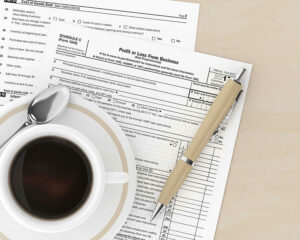
However, freelance authors, photographers, and artists are exempt from the uniform capitalization rules if they qualify. You claim a casualty or theft loss of inventory, including items you hold for sale to customers, through the increase in the cost of goods sold by properly reporting your opening and closing inventories. You cannot claim the loss again as a casualty or theft loss. Any insurance or other reimbursement you receive for the loss is taxable.
M&A transactions: Deducting accrued liabilities – The Tax Adviser
M&A transactions: Deducting accrued liabilities.
Posted: Sat, 01 Oct 2022 07:00:00 GMT [source]
As with any complex change to record-keeping procedures, it’s natural to expect a few accounting errors to pop up when you convert from cash to accrual. During the first months, you may need to heavily review your financial statements to ensure that they properly reflect the new accounting method. Going forward, you can build self-checks and audits into your bookkeeping system to catch mistakes and correct them.
Don’t Miss These Ways to Get Your Staff Ready for Tax…
The summary of computation and explanation must be sufficient to demonstrate that the (net) section 481(a) adjustment is computed correctly. If the applicant is a CFC or 10/50 corporation, or a trade or business of a CFC or 10/50 corporation, and its functional currency is not the U.S. dollar, state the (net) section 481(a) adjustment in that functional currency. The statement may be combined with the information requested on the fourth line on page 1 (list the applicants and their identification numbers) and on line 24 (user fee). The year of change is the first tax year the applicant uses the proposed accounting method, even if no affected items are taken into account for that year. Once you have set up your accounting method and filed your first return, generally, you must receive approval from the IRS before you change the method. A change in your accounting method includes a change not only in your overall system of accounting but also in the treatment of any material item.
Another important note is the broad definition of a tax shelter, whereby many small businesses that would otherwise qualify are not eligible for the cash method of accounting. A tax shelter may exist where more than 35 percent of an entity’s losses are allocated to owners who do not actively participate in management. Even one loss year after several years of consistent profitability could cause a business to be considered a tax shelter for that loss year. To illustrate the change from an accrual to a cash basis adjustment, accountants employ specific formulas. The transition from accrual to cash accounting is simplified as a result.
Building a Chart of Accounts (COA) for Accrual Accounting
All S corporations, regardless of when they became an S corporation, must use a permitted tax year. Figure tax for a short year under the general rule, explained below. You may then be able to use a relief procedure, explained later, and claim a refund of part of the tax you paid. The corporation’s final return will cover the short period from January 1 through July 23.
- Here’s what you’ll need to know to identify good candidates to switch methods, as well as give you just enough information to avoid missing a good planning opportunity.
- This adds expenses which were paid in the current period but relate to a future period and have not yet been incurred.
- As money is earned it is categorized as assets or liabilities on the balance sheet.
- Intuit’s QuickBooks Online, for instance, provides the option to switch between cash and accrual accounting.
- Income is constructively received when an amount is credited to your account or made available to you without restriction.
For the IRS’s approval of the hybrid approach, however, you must adhere to specific guidelines. The modifications, as mentioned earlier, are essential for a seamless change from the accrual to the cash adjustment journal entry. These modifications entail switching to a payment schedule solely based on cash inflows and outflows. If you provide a good or service and invoice a customer, you gain a receivable. The invoice amount remains a receivable until the customer pays you. Accrual accounting tends to be more accurate and gives a clearer picture of your long-term finances.
Cash Basis Method of Accounting
If they haven’t been paid, they are considered current assets on the balance sheet. If they have been paid they are considered revenue on the income statement. Maybe peer pressure is making you want to hang with the cool kids on the GAAP side of the accounting fence. Or your small business isn’t so small anymore, has outgrown cash accounting, you’re accrual to cash conversion for tax reporting looking to sell, get a loan, or a seemingly endless list of solid reasons to convert from cash basis to accrual basis. But some businesses are required to use the accrual basis, such as corporations (other than S corporations) with more than $25 million in average gross receipts for the past three years and those that are inventory-heavy.

To switch from accrual to cash basis, you need to remove any accrued expenses and accounts payable from your expenses. If you must adopt the uniform capitalization rules, revalue the items or costs included in beginning inventory for the year of change as if the capitalization rules had been in effect for all prior periods. When revaluing inventory costs, the capitalization rules apply to all inventory costs accumulated in prior periods. It is the difference between the original value of the inventory and the revalued inventory. Under the cash method, generally, you deduct expenses in the tax year in which you actually pay them. This includes business expenses for which you contest liability.
Accrual to Cash
If C elects S status for its 2017 tax year, it will not be required to convert from the cash method of accounting. Enter the amounts requested on lines 2a through 2g, even though the calculation of some amounts may not have been required in determining taxable income due to the applicant’s present accounting method. Applicants with an applicable financial statement changing to an accrual method and entering an amount on line 2a should complete Schedule B if the income is subject to section 451(b). Enter the name of the entity (or common parent corporation if the entity is a member of a consolidated group) on the first line of Form 3115. Also enter the name of the separate and distinct trade or business requesting an accounting method change on the fourth line.
- Every taxpayer (individuals, business entities, etc.) must figure taxable income for an annual accounting period called a tax year.
- C will be subject to the BIG tax as it collects the receivables that were on hand when S status was elected.
- You can adopt and use this practice on the first tax return you file for the business, subject to IRS approval on examination of your tax return.
- You should also keep records of the respective departmental or class accumulation of all purchases, markdowns, sales, stock, etc.
- Use the specific identification method when you can identify and match the actual cost to the items in inventory.
- You will need a designated change number (DCN) describing the type of change you want to make.
Whatever the reason to change your reporting method, know that cash to accrual conversion is intricate. The accrual to cash conversion excel worksheet works out the cash payments based on the expenses incurred for the period. The cash method is simpler and more straightforward, and can sometimes offer more flexibility. For example, a business could decide to pay off all their expenses at the end of their tax year to lower their tax bill even if those expenses weren’t due at the time. The accrual method can also offer some advantages to a business.
Although we can’t respond individually to each comment received, we do appreciate your feedback and will consider your comments and suggestions as we revise our tax forms, instructions, and publications. Don’t send tax questions, tax returns, or payments to the above address. In some cases, you may have to refer to other sources for a more in-depth explanation of the topic.. Every taxpayer (individuals, business entities, etc.) must figure taxable income for an annual accounting period called a tax year.
On that note, we suggest keeping a few specific areas in mind since they tend to be common when companies convert from cash accounting to GAAP accounting. Granted, they all won’t apply to every entrepreneur, sole proprietor, or wide-eyed business person out there, but they can help you acclimate as you wade into the accrual accounting waters. Whatever the case, converting to Generally Accepted Accounting Principles (GAAP) accounting is a significant step for a company or business owner, whether the move is forced upon you or specifically sought out. But for as many doors as a conversion to the accrual method can open for your business, it doesn’t come without hurdles and the need for a well-informed, organized approach.
Typically, a change from the accrual to cash method of accounting is beneficial if a taxpayer has more accounts receivables and prepaid expenses compared to accounts payable and accrued expenses. The largest favorable impact is usually https://www.bookstime.com/ in the year of the method change. All applicants requesting to change their accounting method for depreciation or amortization must complete Schedule E of Form 3115. Attach a statement describing the property subject to the change.
- If you operate two or more separate and distinct businesses, you can use a different accounting method for each business.
- This deferral period is the number of months between the beginning of the retained year and the close of the first required tax year.
- Accrual to cash conversion is arguably one of the most complicated concepts in accounting.
- When you offer merchandise for sale at a price lower than market in the normal course of business, you can value the inventory at the lower price, minus the direct cost of disposition.
- A newly formed partnership, S corporation, or PSC can adopt a week tax year ending with reference to either its required tax year or a tax year elected under section 444 without IRS approval.
- But some businesses are required to use the accrual basis, such as corporations (other than S corporations) with more than $25 million in average gross receipts for the past three years and those that are inventory-heavy.
